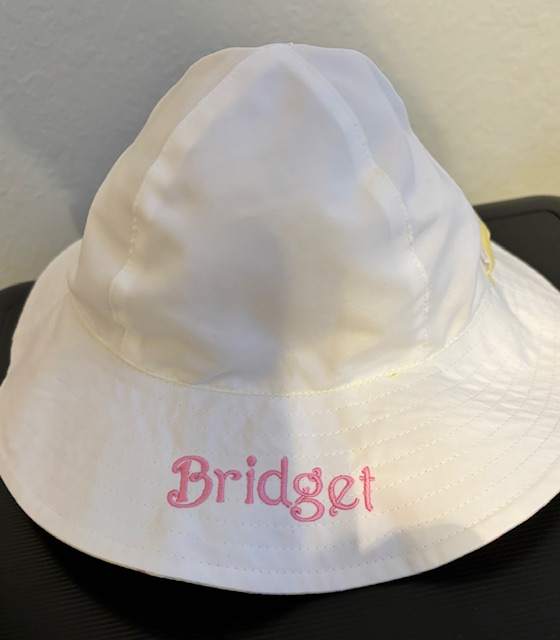The Art of Custom-made Needlework: Unlocking the Secrets to Creating Distinct and Memorable Styles
Needlework, a craft soaked in tradition and creativity, holds within its detailed stitches the power to change textile right into a canvas of unique expression. The tricks to creating personalized embroidery layouts that captivate the eye and leave a lasting impact lie in a delicate balance of strategy, imagination, and attention to information. As we delve into the globe of custom-made embroidery, we uncover the nuanced interplay in between string selection, sew intricacy, and design personalization that boosts a mere garment to a masterpiece. Join us on a trip through the art of customized embroidery as we unravel the secrets behind crafting absolutely memorable and distinct productions.
Choosing the Right Needlework Threads
When choosing needlework threads, what key variables should you consider to make sure the finest outcomes for your custom-made layouts? The choice of needlework string is critical in identifying the last end result of your embroidered design. One of the key factors to consider is the material of the thread. Different products such as cotton, polyester, rayon, and silk offer differing levels of shine, longevity, and texture. It is necessary to pick a thread product that complements the material you are stitching on and straightens with the desired appearance of the layout.
Thicker strings can add measurement and texture to your design, while finer threads are ideal for intricate details and small message. Additionally, taking into consideration the color fastness and washability of the string is critical to ensure that your personalized layouts preserve their quality and vibrancy over time.
Checking Out Various Stitch Techniques
To look into the realm of 'Checking out Different Stitch Techniques', one need to grasp the intricacies and nuances that each stitching approach gives the art of embroidery. Various stitch techniques not only add visual interest yet likewise add to the total structure and measurement of the layout. One preferred stitch strategy is the satin stitch, which involves closely jam-packed parallel stitches to produce a smooth and glossy surface area, ideal for filling in forms and developing bold lays out.
On the various other hand, the backstitch is a functional strategy frequently made use of for describing and adding fine details. It entails sewing in reverse to create a solid line of embroidery. Furthermore, the French knot stitch includes a tactile element to layouts, ideal for creating textured accents like blossom centers or decorative touches.
Discovering different stitch techniques permits embroiderers to play with light, shadow, and depth within their designs, elevating the aesthetic appeal and creative quality of their embroidery tasks. By mastering various stitching approaches, one can open endless possibilities for creating unique and unforgettable customized needlework items.
Incorporating Personalized Layout Aspects
Having actually explored the intricacies of various stitch methods such as the satin stitch, backstitch, and French knot, the focus now shifts in the direction of integrating personalized design aspects in custom-made needlework jobs. Personalized style components play a vital function in making needlework tasks absolutely one-of-a-kind and remarkable.
An additional method to include tailored design elements is by including symbols or motifs that hold unique meaning to the recipient or show their rate of interests and personality. For example, incorporating a favorite flower, pet, or hobby-related sign can make the embroidery design much more meaningful and personalized. In addition, choosing shades that reverberate with the recipient or line up with the designated theme can further improve the personalization of the needlework job.
Grasping the Art of Shade Control
One trick aspect of color control is recognizing color concept. This includes recognizing how various colors interact with each various other, the emotions they communicate, and exactly how they can be integrated to develop aesthetically appealing designs. By using shade concept concepts, embroiderers can develop unified color schemes that improve the overall look of the style.
Additionally, taking notice of comparison is important in color sychronisation. Making use of contrasting colors can aid certain elements of the style pop, improve clarity, and produce a visually vibrant needlework item. By understanding the art of shade coordination, embroiderers can boost their designs and develop unforgettable pieces that resonate with clients and audiences alike.
Enhancing Structure With Advanced Needlework Stitches

French knots, for instance, are perfect for including small, elevated dots to your style, mimicking the look of grains or creating a distinctive surface area. Bullion knots, on the various other hand, can be utilized to produce twisted, ropelike components that include an elegant feeling to the needlework. Seed stitching involves small, scattered stitches that can fill up in areas with a polychromatic structure, while turkey job develops cosy, dimensional accents similar to animal hair or vegetation. Explore these sophisticated embroidery stitches permits you to push the limits of traditional embroidery and produce absolutely unique and aesthetically attractive structures in your layouts.
Conclusion
Finally, the art of custom-made needlework entails a mix of selecting the best threads, checking out different stitch techniques, integrating customized style components, understanding color coordination, and boosting appearance with innovative stitches. By comprehending and applying these crucial elements, embroiderers can produce special and unforgettable designs that display their imagination and ability. Embroidery enthusiasts can unlock the secrets to developing lovely and custom items that attract attention and leave an enduring perception.